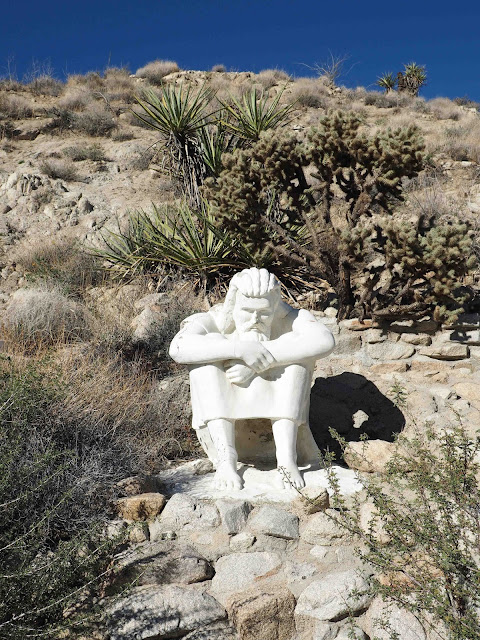A lot of people seem to find spiritual solace while walking in the
desert. It makes them feel closer to god,
or something. This has always confused
me. If god is anything he must surely be
omnipresent, so the nearest shopping mall must be as spiritual and godly as the
desert. Other people, of course, see the
desert as a kind of hell, which creates
a whole different set of problems.

Maybe St Jerome would have understood. In the middle of the fourth
century, in order to become more godly, he headed out for “the remotest part of a wild and stony desert burnt up with
the heat of the sun, so scorching that it frightens even the monks who live
there … this exile and prison to which through fear of Hell I had voluntarily
condemned myself, with no other company but scorpions and wild beasts.” He assumed this mortification would be good
for the soul. but when he got there he found himself thinking about the dancing
girls of Rome, and that was obviously no good whatsoever for his spiritual
ambitions, and so he decided to learn Hebrew to take his mind off things, and
that apparently did the job. St Jerome is also
the patron saint of librarians

I’ve often wondered, in an “idea for novel” kind of way, what would
happen if a true blue agnostic, not entirely unlike me, was walking in the
desert and heard the voice of god. Would
that make him a believer or would it make him think he’d gone insane? Or both?
Probably it’s only a short story, though one perhaps suitable for
adaptation into a short film. In which
case the Desert Christ Park in Yucca Valley would be a very fine location for at
least part of it. I went there, not for
the first time, at the weekend.
Desert Christ Park is, for want of a better term, a
kind of Christian theme park, built on a hillside overlooking the town, a patch
of high desert scattered with white statues, many of them arranged in tableaux
depicting scenes from the life of Jesus.
The park dates back to 1951, though it’s changed
location over the years, and it was conceived by one Eddie Garver, known as the
Desert Parson. The sculptures themselves
were made by Frank Antone Martin, an engineer from Inglewood. They’re made of reinforced concrete and not all
of them are in the very best condition, as you can see from the rebar poking
through here and there, but that doesn’t really matter. There’s nothing wrong with a bit of desert
ruin.
Walking there is an interesting experience. You go there thinking it’s going to be a bit
of a joke, and certainly the place is not without its elements of absurdity,
but as you walk around you realize it’s rather a decent, honest attempt to
express a genuine religious faith, and regardless of whether you share that
faith, it’s hard not to be moved and impressed by the effort and belief that
went into making it.
If you drive down to Palm Springs and walk around the downtown there,
you’ll find on the wall of the Union Bank a kind of bas relief tile mural containing
the rather dubious headline – “The Desert is the test of the worth of your
spirit.” Well again, surely the worth of
your spirit is tested every day wherever you are, even in a bank in Palm
Springs.
The best thing about the mural – it shows an image of a man taking a
photograph of a cactus. Being a cactus
enthusiast myself, I took a photograph of the man taking the photograph. And I rather wished there could have been somebody
there taking a photograph of me taking a photograph of the man taking a
photograph; but you can’t have everything.
And for those of you who like a good map (and I know some do), here's rather low res one of the Desert Christ Park.



























